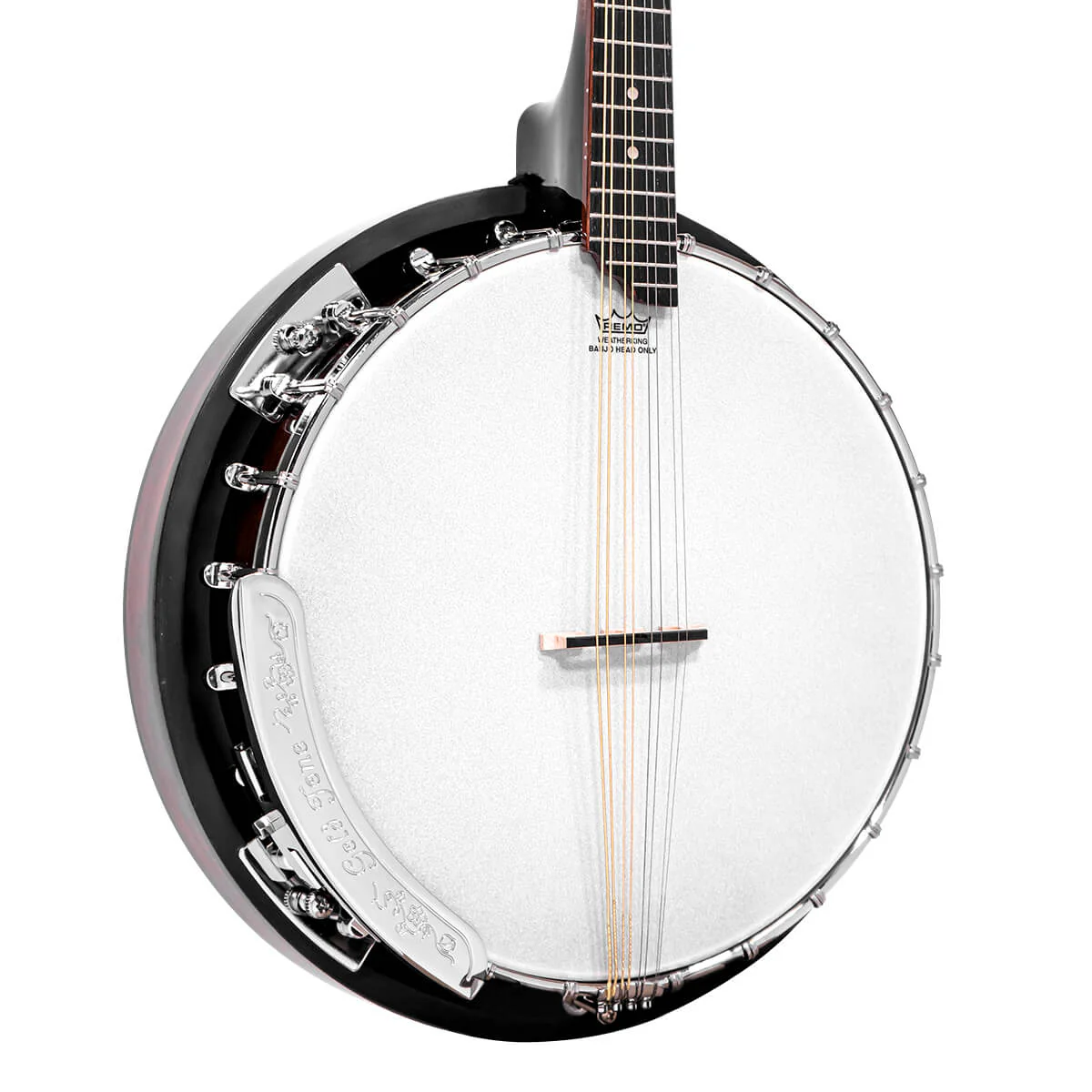The banjo, with its bright twang and infectious energy, is an instrument woven into the very fabric of American music. Its origins, however, stretch far beyond the borders of the United States, carrying a rich history that speaks to resilience, cultural exchange, and the enduring power of music.
From Africa to America: A Legacy of Endurance
The banjo’s story begins in West Africa, where instruments with gourd bodies and skin heads were prevalent. Enslaved Africans brought this tradition with them to the Americas, where it began to evolve. Early American banjos, often homemade from scrap materials, had four or five strings and were frequently fretless. The instrument became a powerful tool for enslaved people, a way to express their sorrows, celebrate their heritage, and forge a sense of community through music.

Minstrel Shows and the Appropriation of a Culture
By the mid-19th century, the banjo had begun to captivate white audiences. Minstrel shows, featuring white performers in blackface who stereotyped African American culture, became popular. These shows prominently featured the banjo, albeit in a distorted form that often downplayed its African roots. Despite this appropriation, the banjo’s undeniable appeal transcended these racist portrayals.

The Rise of Folk Music and the Banjo’s Resurgence
The late 19th and early 20th centuries saw a resurgence of interest in authentic American folk music. Pioneering figures like Pete Seeger and Woody Guthrie embraced the banjo as a powerful tool for social commentary and storytelling. The banjo’s bright sound and versatility perfectly complemented the raw energy of folk music, propelling it to new heights of popularity.

Beyond Folk: The Banjo’s Genre-Bending Journey
The banjo’s influence wasn’t confined to folk music. The early 20th century saw the rise of ragtime, a lively and syncopated style that incorporated the banjo’s percussive potential. Jazz musicians also embraced the banjo, with artists like Béla Fleck pushing the boundaries of the instrument’s technical and expressive capabilities. Today, the banjo can be found in a mind-boggling array of genres, from bluegrass and country to rock and electronica.
The Allure of the Banjo: Technique and Tone
The banjo’s unique sound is a result of its construction and playing techniques. Its head, traditionally made from animal skin, creates a bright, percussive attack. The strings, typically made of nylon or metal, are stretched across a fretted neck and played with picks or the bare fingers. Different picking styles, such as the clawhammer and three-finger picking, produce distinct rhythmic and tonal variations. Mastering the banjo requires dedication and dexterity, but the rewards are plentiful. The instrument’s dynamic range allows for both delicate melodies and driving rhythms, making it a versatile companion for a variety of musical styles.

The Banjo Today: A Living Legacy
The banjo continues to thrive in the 21st century. Festivals dedicated to the instrument draw crowds from around the world, and a new generation of virtuoso players is pushing the boundaries of what’s possible. From traditional folk gatherings to experimental music venues, the banjo’s energetic spirit continues to resonate.
Explore the use of electronics and effects pedals in banjo performances
The banjo, with its bright twang and rhythmic pluck, has long been a mainstay of American music. Traditionally known for its acoustic charm, the banjo is increasingly finding a new voice in the world of electronics and effects pedals. This trend is not just about adding bells and whistles; it’s about expanding the sonic palette of the banjo and pushing the boundaries of its musical capabilities.
Beyond the Acoustic Frontier
For centuries, the banjo relied solely on its natural acoustic properties. However, the rise of electric instruments and the desire to compete with louder bands led to the development of the electric banjo. Unlike its acoustic cousin, the electric banjo features a pickup that converts string vibrations into electrical signals. This allows the instrument to be amplified and integrated seamlessly into a band setting.
Effects Pedals: A World of Sonic Possibilities
The true magic lies in the realm of effects pedals. These compact electronic devices manipulate the banjo’s signal in various ways, opening doors to a universe of sonic possibilities. Popular effects for banjo include:
- Delay: Creates echoes and repeats, adding depth and texture to the banjo’s sound.
- Chorus: Thickens the banjo’s tone, making it sound fuller and more lush.
- Reverb: Simulates the natural ambience of a room, adding a sense of space and dimension.
- Distortion: Introduces grit and growl, perfect for creating a more aggressive banjo sound for rock or blues styles.
Exploring New Genres and Breaking Boundaries
The use of electronics and effects pedals allows banjo players to explore genres previously inaccessible to the instrument. Imagine a banjo drenched in reverb adding ethereal beauty to an ambient soundscape. Distortion pedals can create a banjo that snarls and screams alongside electric guitars in a rock band. This versatility allows banjoists to break free from traditional sonic constraints and contribute to a wider range of musical styles.
Challenges and Considerations
While exciting, incorporating electronics and effects does come with its challenges. Finding the right balance between the banjo’s natural sound and the added effects is crucial. Additionally, feedback, a common issue with electric instruments, needs to be carefully managed. However, with proper knowledge and experimentation, these challenges can be overcome.
A New Voice for the Banjo
The embrace of electronics and effects pedals signifies a new chapter in the banjo’s evolution. It’s a testament to the instrument’s adaptability and its ability to remain relevant in the ever-changing world of music. Whether used subtly to enhance the banjo’s natural character or pushed to sonic extremes, electronics and effects offer exciting possibilities for banjo players, ensuring the instrument continues to surprise and delight audiences for generations to come.

A Symbol of Resilience and Cultural Exchange
The banjo’s story is more than just a musical journey. It’s a testament to the enduring spirit of African culture in America and a reminder of the power of music to transcend barriers. As the banjo continues to evolve, it carries with it a rich history that speaks to the beauty of cultural exchange and the resilience of the human spirit. Whether played on a street corner or a concert hall stage, the banjo’s vibrant voice continues to captivate audiences and tell stories that resonate far beyond the notes themselves.


